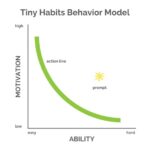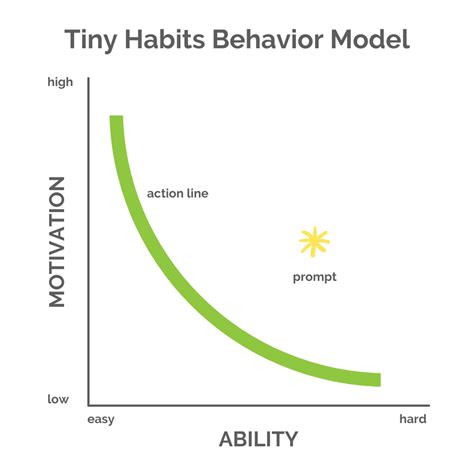
Small, seemingly harmless habits can reveal surprising insights into a person’s character, anxieties, and even their past, according to a recent online discussion. From meticulously organizing items to peculiar eating rituals, these quirks, often subconscious, offer a glimpse into the complexities of human behavior.
The internet is abuzz with revelations about harmless habits that individuals possess, which surprisingly unveil deeper aspects of their personalities and experiences. A recent online thread, highlighted by Yahoo Lifestyle, has sparked a wave of self-reflection and shared amusement as people dissect their own and others’ seemingly innocuous behaviors. These quirks, ranging from the obsessive to the simply odd, often serve as subtle indicators of underlying traits, anxieties, or coping mechanisms. Experts suggest that while not definitive, these habits provide valuable clues into the intricate tapestry of human psychology.
One prevalent category of habits revolves around organizational compulsions. Some individuals exhibit a strong need to arrange objects in a specific manner, whether it’s aligning cans in the pantry, color-coding their wardrobes, or ensuring all labels face outward. “I have to have all the labels on cans and jars in the pantry facing forward,” one user confessed. These behaviors, psychologists suggest, may stem from a desire for control in environments where individuals feel overwhelmed or uncertain. The act of imposing order, even on a small scale, can provide a sense of calm and predictability. The need for symmetry is also included in this category. People often meticulously organize their belongings or ensure an equal number of items on either side of a space. This behavior can reflect a deeper need for balance and harmony in their lives.
Another intriguing set of habits centers on food-related rituals. Many people admit to having specific ways of eating certain foods, such as consuming items in a particular order, separating components before eating, or meticulously cutting food into small pieces. “I eat certain foods in a specific order and my partner thinks I’m crazy for it. But it makes me happy,” one person shared. Such rituals, experts explain, might be linked to sensory preferences, childhood experiences, or even obsessive-compulsive tendencies. They can create a sense of comfort and familiarity, turning eating into a ritualistic practice that provides reassurance. Some people meticulously cut their food into small pieces, while others must eat their food in a particular order. These actions, according to some experts, may be rooted in the need for control or a desire for predictability.
Repetitive behaviors, such as clicking pens, tapping fingers, or jiggling legs, are also commonly reported. These habits often manifest during moments of stress or boredom, serving as a physical outlet for nervous energy. “I constantly jiggle my leg when I’m sitting,” one individual admitted. Experts suggest that these actions can be a form of self-soothing, helping individuals regulate their emotions and maintain focus. While often unconscious, these repetitive movements can provide a sense of grounding and stability. Such habits can also be indicative of underlying anxiety or attention disorders, warranting further examination in some cases.
The need for routines and rituals extends beyond organizational and eating habits. Many people find comfort in performing specific tasks in the same way each day, whether it’s their morning coffee routine, their commute to work, or their bedtime ritual. These routines can create a sense of stability and predictability, especially during times of change or uncertainty. “I have to do the same things in the same order every morning, or my day feels off,” one person explained. Such routines can provide a sense of control and comfort, helping individuals navigate the complexities of daily life.
Some habits involve verbal or cognitive quirks, such as repeating phrases, counting steps, or mentally rehearsing conversations. These behaviors can be subtle indicators of anxiety, obsessive-compulsive tendencies, or simply a unique way of processing information. “I often find myself mentally rehearsing conversations before they happen,” one person shared. Experts suggest that these cognitive habits can be a way of preparing for social interactions or managing anxiety about potential outcomes. They can also reflect a highly analytical or detail-oriented personality.
The reasons behind these harmless habits are diverse and often deeply personal. Childhood experiences, traumatic events, and underlying personality traits can all contribute to the development of these quirks. Some habits may be learned from family members or peers, while others may emerge as coping mechanisms in response to stress or anxiety. Understanding the origins of these habits can provide valuable insights into an individual’s past and their current emotional state.
While most harmless habits are just that—harmless—they can sometimes indicate underlying issues that warrant professional attention. When habits become disruptive, distressing, or interfere with daily life, they may be indicative of an anxiety disorder, obsessive-compulsive disorder, or other mental health condition. In such cases, seeking help from a qualified mental health professional is essential. Cognitive-behavioral therapy (CBT) and other evidence-based treatments can help individuals manage their habits and develop healthier coping mechanisms.
The online discussion about harmless habits has highlighted the diversity and complexity of human behavior. These quirks, often overlooked or dismissed as insignificant, offer valuable clues into our personalities, anxieties, and experiences. By paying attention to these subtle indicators, we can gain a deeper understanding of ourselves and others. The key is to approach these observations with empathy and curiosity, recognizing that everyone has their own unique set of quirks that make them who they are.
In conclusion, the seemingly insignificant habits that people exhibit often hold surprising insights into their character and psychology. From organizational compulsions to food-related rituals and repetitive behaviors, these quirks can reveal underlying anxieties, coping mechanisms, and personality traits. While most harmless habits are benign, they can sometimes indicate underlying issues that warrant professional attention. By paying attention to these subtle indicators, we can gain a deeper understanding of ourselves and others, fostering empathy and acceptance of human diversity. The internet discussion serves as a reminder that even the smallest habits can tell a big story about who we are.
FAQ: Decoding Harmless Habits
1. What are some examples of harmless habits that can reveal insights about a person?
Harmless habits come in many forms and can include organizational compulsions (like meticulously arranging items), food-related rituals (eating foods in a specific order), repetitive behaviors (tapping fingers or jiggling legs), adherence to routines, and verbal or cognitive quirks (repeating phrases mentally). Each of these can reflect underlying personality traits, anxieties, or coping mechanisms.
2. Why do people develop these harmless habits?
The development of harmless habits is influenced by a variety of factors, including childhood experiences, stress, anxiety, and underlying personality traits. Some habits may be learned from family or peers, while others emerge as coping mechanisms to deal with specific emotional or environmental stressors. They often provide a sense of comfort, control, or predictability.
3. Can harmless habits ever be a sign of a more serious problem?
Yes, while most harmless habits are benign, they can sometimes indicate underlying issues such as anxiety disorders, obsessive-compulsive disorder (OCD), or other mental health conditions. If a habit becomes disruptive, distressing, or interferes with daily life, it’s important to seek professional help from a mental health expert.
4. How can understanding these habits help in interpersonal relationships?
Understanding the harmless habits of others can foster empathy and acceptance. Recognizing that these quirks may be rooted in deeper emotional or psychological needs can lead to more compassionate and understanding interactions. It promotes the idea that everyone has unique ways of coping and navigating the world.
5. What can individuals do to manage or change a harmless habit if they find it bothersome?
If a harmless habit becomes bothersome, individuals can try several strategies to manage or change it. These include identifying triggers that lead to the habit, practicing relaxation techniques to reduce stress and anxiety, seeking support from friends or family, and consulting with a therapist. Cognitive-behavioral therapy (CBT) can be particularly effective in addressing habits related to anxiety or OCD.
Expanded Article:
The Secret Language of Quirks: Unmasking Personality Through Harmless Habits
In the intricate dance of human behavior, the smallest gestures and routines often whisper the loudest secrets. Recent online discussions, spurred by observations of seemingly harmless habits, have ignited a collective fascination with the subtle language of quirks. From the meticulous arrangement of household items to the idiosyncratic rituals surrounding meal consumption, these behaviors, often performed unconsciously, offer a window into the complex tapestry of personality, anxieties, and past experiences.
These quirks, far from being mere eccentricities, can be viewed as subtle indicators of underlying psychological states. Experts suggest that while they should not be interpreted as definitive diagnoses, they can provide valuable insights into how individuals perceive and interact with the world. The renewed interest in these habits underscores a growing awareness of the profound interconnectedness between our observable actions and our internal landscapes.
The Order Obsession: Control in a Chaotic World
Among the most commonly observed harmless habits is the compulsion to impose order on one’s surroundings. This can manifest in various forms, from meticulously aligning cans in the pantry to color-coding wardrobes with military precision. One online commenter confessed, “I can’t stand it when the labels on my spice jars aren’t facing forward.” This seemingly trivial concern highlights a deeper psychological need for control and predictability.
Psychologists suggest that these behaviors often stem from a desire to mitigate feelings of overwhelm or uncertainty. In environments where individuals feel a lack of control, the act of imposing order on a small scale can provide a sense of calm and reassurance. The arrangement of objects becomes a symbolic act of asserting agency, transforming a chaotic external world into one that feels more manageable and predictable.
The need for symmetry is another facet of this organizational obsession. Some individuals exhibit a strong preference for balanced arrangements, ensuring an equal number of items on either side of a space or arranging objects in symmetrical patterns. This behavior can reflect a deeper yearning for harmony and equilibrium in their lives, a desire to create a sense of balance that may be lacking in other areas.
However, it’s crucial to distinguish between a harmless preference for order and a more problematic manifestation of obsessive-compulsive disorder (OCD). While a fondness for neatness is generally benign, an uncontrollable need for order that causes significant distress or interferes with daily functioning may warrant professional evaluation.
The Culinary Canvas: Food Rituals and Sensory Sensibilities
Beyond organizational habits, food-related rituals offer another rich source of insight into individual preferences and psychological states. Many people admit to having specific ways of eating certain foods, from consuming items in a particular order to meticulously separating components before indulging.
One online participant shared, “I have to eat the crust of my pizza first, then the toppings. It’s just how I’ve always done it.” Such rituals, experts explain, may be linked to sensory preferences, childhood experiences, or even obsessive-compulsive tendencies. They can create a sense of comfort and familiarity, transforming eating into a ritualistic practice that provides reassurance and predictability.
For some, these rituals may stem from a heightened sensitivity to textures or flavors. The act of separating components or eating foods in a specific order allows them to control the sensory experience, minimizing potential unpleasant surprises. Others may have developed these habits during childhood, associating them with positive memories or feelings of security.
Conversely, food-related rituals can also be indicative of underlying anxiety or control issues. Some individuals may meticulously cut their food into small pieces or obsessively count calories as a way of managing anxiety about weight or body image. In these cases, the rituals become a means of exerting control over an aspect of their lives that feels uncertain or threatening.
The Rhythmic Release: Repetitive Behaviors and Nervous Energy
Repetitive behaviors, such as clicking pens, tapping fingers, or jiggling legs, are ubiquitous habits that often betray underlying levels of stress or boredom. These actions, often performed unconsciously, serve as a physical outlet for nervous energy, helping individuals regulate their emotions and maintain focus.
“I can’t seem to sit still. My leg is always bouncing,” one online commenter confessed. Experts suggest that these repetitive movements can be a form of self-soothing, providing a sense of grounding and stability during moments of anxiety or restlessness. They can also serve as a distraction from negative thoughts or feelings, allowing individuals to temporarily escape from mental distress.
While often harmless, repetitive behaviors can sometimes be indicative of underlying anxiety disorders, attention disorders, or other mental health conditions. In cases where these habits become excessive, disruptive, or accompanied by other symptoms, professional evaluation may be warranted.
The Comfort of Routine: Rituals and the Search for Stability
The human brain craves predictability and structure, and many individuals find comfort in establishing routines and rituals that provide a sense of stability and control. These routines can range from elaborate morning rituals to consistent bedtime practices, offering a sense of grounding during times of change or uncertainty.
“I have to make my coffee the exact same way every morning, or my whole day feels off,” one person shared. Such routines can provide a sense of control and comfort, helping individuals navigate the complexities of daily life with greater ease and confidence. They can also serve as a buffer against stress, providing a predictable and reassuring framework within which to operate.
These routines often become deeply ingrained in our daily lives, shaping our sense of identity and providing a sense of continuity over time. They can also serve as a way of honoring traditions or connecting with loved ones, creating a sense of belonging and shared experience.
The Internal Monologue: Verbal and Cognitive Quirks
Beyond observable behaviors, verbal and cognitive quirks can offer subtle glimpses into the inner workings of the mind. These habits can include repeating phrases, counting steps, mentally rehearsing conversations, or engaging in other idiosyncratic thought patterns.
“I often find myself mentally rehearsing conversations before they happen, just to be prepared,” one person admitted. Experts suggest that these cognitive habits can be a way of preparing for social interactions or managing anxiety about potential outcomes. They can also reflect a highly analytical or detail-oriented personality, a tendency to overthink or anticipate potential challenges.
These internal monologues can be both helpful and harmful. On the one hand, they can help individuals anticipate and prepare for various situations, enhancing their problem-solving skills and promoting a sense of confidence. On the other hand, they can also lead to excessive worry, rumination, and anxiety, exacerbating feelings of stress and unease.
The Origins of Quirks: Nature, Nurture, and the Shaping of Behavior
The reasons behind these harmless habits are diverse and often deeply personal. Childhood experiences, traumatic events, and underlying personality traits can all contribute to the development of these quirks. Some habits may be learned from family members or peers, while others may emerge as coping mechanisms in response to stress or anxiety.
Early childhood experiences, in particular, can have a profound impact on the development of habits and routines. Children who experience inconsistent or unpredictable environments may develop habits as a way of creating a sense of stability and control. Traumatic events can also lead to the development of coping mechanisms that manifest as harmless habits, providing a sense of comfort or distraction during times of distress.
Underlying personality traits, such as anxiety, perfectionism, or sensitivity, can also influence the types of habits that individuals develop. Anxious individuals may be more prone to repetitive behaviors or cognitive quirks, while perfectionists may be more likely to exhibit organizational compulsions.
When Harmless Habits Become Harmful: Recognizing the Red Flags
While most harmless habits are benign, it’s essential to recognize when they may indicate underlying issues that warrant professional attention. When habits become disruptive, distressing, or interfere with daily life, they may be indicative of an anxiety disorder, obsessive-compulsive disorder, or other mental health condition.
Red flags to watch out for include:
- Excessive time spent on the habit: If a habit consumes a significant amount of time each day, interfering with work, relationships, or other important activities, it may be a cause for concern.
- Distress or anxiety associated with the habit: If an individual experiences significant distress or anxiety when they are unable to perform the habit, it may be indicative of an underlying issue.
- Impairment in daily functioning: If the habit interferes with the ability to perform daily tasks, maintain relationships, or engage in social activities, it may be a sign of a more serious problem.
- Compulsive nature of the habit: If the habit feels uncontrollable or irresistible, even when the individual knows it is irrational or harmful, it may be indicative of obsessive-compulsive disorder.
In such cases, seeking help from a qualified mental health professional is essential. Cognitive-behavioral therapy (CBT) and other evidence-based treatments can help individuals manage their habits and develop healthier coping mechanisms.
Embracing Our Quirks: Celebrating Individuality and Understanding Human Behavior
The online discussion about harmless habits has highlighted the diversity and complexity of human behavior. These quirks, often overlooked or dismissed as insignificant, offer valuable clues into our personalities, anxieties, and experiences. By paying attention to these subtle indicators, we can gain a deeper understanding of ourselves and others.
The key is to approach these observations with empathy and curiosity, recognizing that everyone has their own unique set of quirks that make them who they are. Rather than judging or criticizing these behaviors, we can embrace them as expressions of individuality and celebrate the rich tapestry of human diversity.
By understanding the origins and functions of harmless habits, we can also develop greater compassion for ourselves and others. Recognizing that these quirks may be rooted in deeper emotional or psychological needs can lead to more compassionate and understanding interactions, fostering stronger relationships and a more inclusive society.
In conclusion, the seemingly insignificant habits that people exhibit often hold surprising insights into their character and psychology. From organizational compulsions to food-related rituals and repetitive behaviors, these quirks can reveal underlying anxieties, coping mechanisms, and personality traits. While most harmless habits are benign, they can sometimes indicate underlying issues that warrant professional attention. By paying attention to these subtle indicators, we can gain a deeper understanding of ourselves and others, fostering empathy and acceptance of human diversity. The internet discussion serves as a reminder that even the smallest habits can tell a big story about who we are, urging us to embrace the quirks that make each of us unique and human.
![Nostalgia is Served: [Restaurant Name] Returns After 30 Years!](https://kilaupesona.com/wp-content/uploads/2025/06/unnamed-file-281-150x150.jpg)








